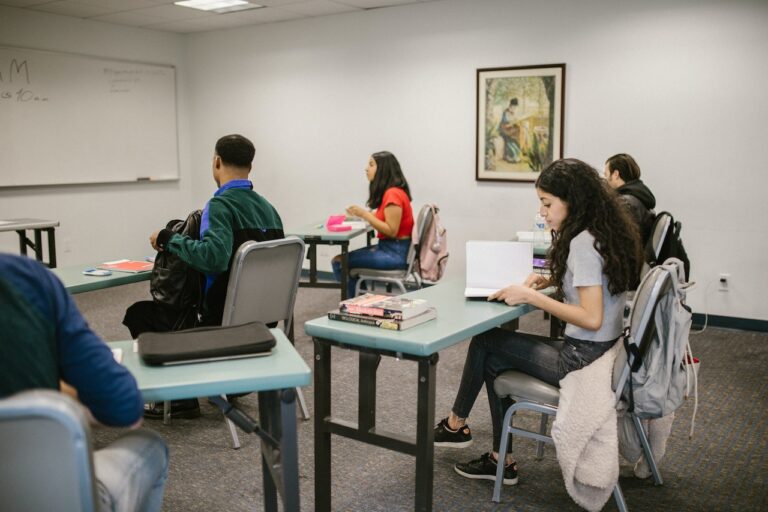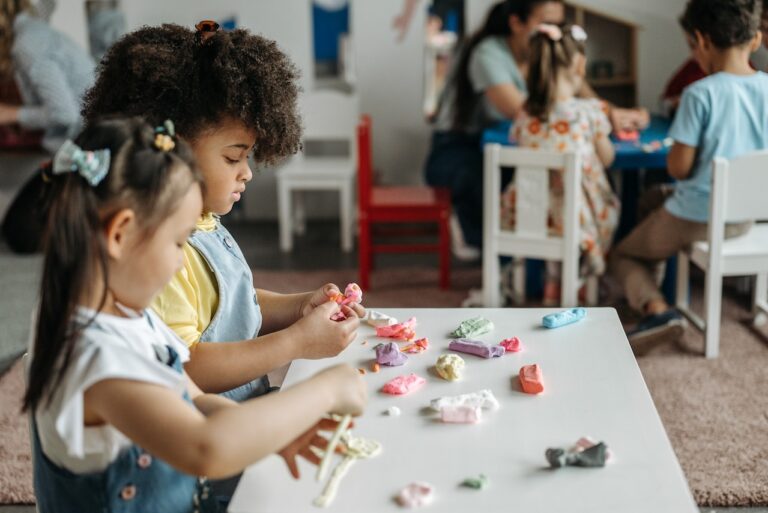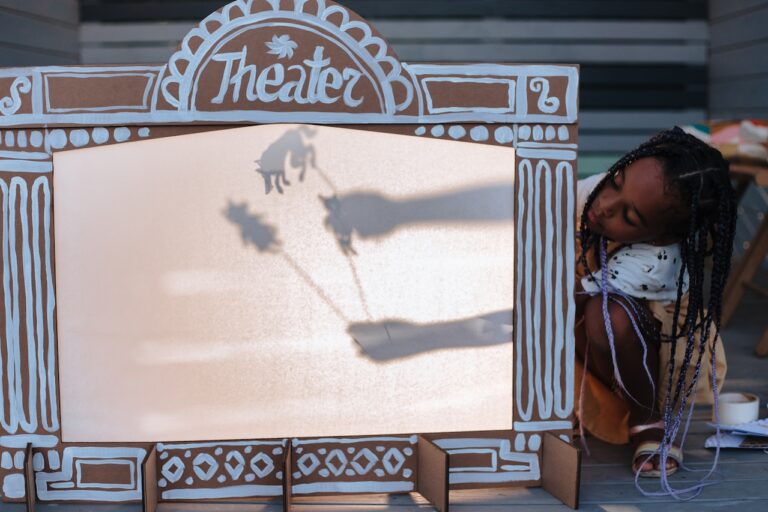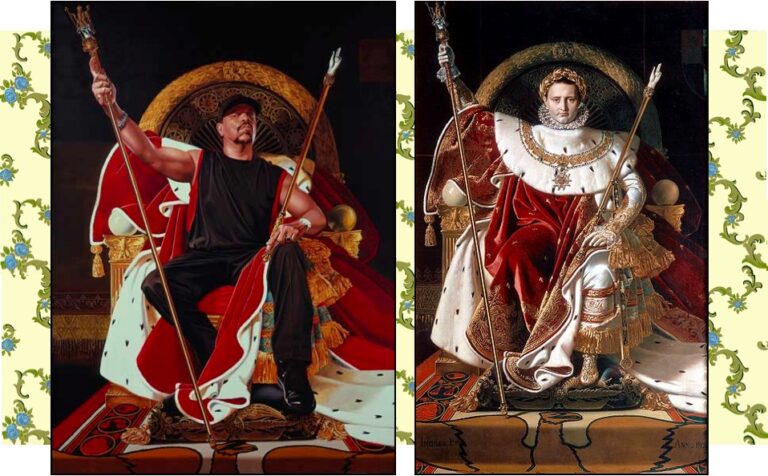Ice Breaker Activities
Stepping in as a casual relief teacher can indeed be challenging, but you
can certainly win the class over with some genuinely exciting ice breaker
activities. Let’s explore a few options that not only enhance student
engagement but help you to gain their trust.
can certainly win the class over with some genuinely exciting ice breaker
activities. Let’s explore a few options that not only enhance student
engagement but help you to gain their trust.
1. The 'Would You Rather' game

This classic game is perfect to start a lesson. It’s simple, fun, and allows
students to open up without pressure. Just pose two scenarios and ask the students to select the one they’d prefer. For example, would you rather read a book or watch a movie? This offers an insight into your students’ interests while setting a relaxed tone for the rest of the day. It also encourages students to make tougher decisions with competing priorities.
To help students bring a physical aspect to this game and get some of the wriggles out, get them to stand up and walk to one side of the room to indicate their decision. Then allow people to justify why they think their decision is best and see if they can compel others to move sides.
2. Two Truths and a Lie

Requiring no props and offering lots of opportunity for interaction, Two
Truths and a Lie is a fantastic conversation starter. Each student gives
three statements about themselves, two of which are true and one which
is false. The class then has to guess which one is the lie. It’s a brilliant way
to learn about each other while encouraging teamwork and promoting
critical thinking.
This activity is always gaurenteed to generate good laughter in the classroom whilst creating relationships they may not have existed before. Students often share things that are very interesting to others which results in great freidnships and discussions after the game is complete.
3. Self-portrait Drawing

Ask your students to draw a quick self-portrait and add three important
things about themselves in the picture. Encourage them to be as creative
as possible. Then, you can either have them present their drawings to the
class, or you could collect the pictures to create a “get to know you”
gallery.
This activity is not solely an entertaining art project, it also serves as a fantastic confidence-building exercise for students. Students can be hard
on themselves and not understand their amazing talents. Having them
think about some important things they have done and can contibute to
their school community can really boost their confidence.
It enables students to courageously express themselves artistically and personally, which can significantly enhance their self-esteem.
4. Quiz Quiz Trade

This Kagan structure activity encourages every student to engage. Students circulate, quizzing each other with flashcards. After quizzing, students swap cards (trade) and then find a new partner to quiz. It’s a fun and energetic way to review knowledge and learn from each other.
An engaging way to expand on this activity to further reinforce learning is to allow the students to create their own quizzes based on a recently learned topic. Not only does it encourage students to review and reflect on the lesson material, it also promotes creativity and critical thinking skills.
How to Implement this Expansion:
1. After briefing students with the base Kagan structure activity, propose
the idea of creating their own flashcards based on a recently learned
topic. Motivate them to make them as challenging as possible to really
test their classmates’ understanding.
2. Provide them with resources to make their flashcards – this could be
paper and pens or a digital flashcard creation tool.
3. Give students sufficient time to create a set of flashcards. Stress the
importance of correct answers and clarity in their questions.
4. Once the students have created their quizzes, proceed with the quiz-
trade Kagan structure just like before. Students will not only be quizzed
but will also quiz their peers with their own flashcards.
By participating in the creation of their own quizzes, students deepen
their understanding and grasp of the subject, further engraining the
knowledge in their minds. It’s a lighthearted yet educational activity that
will also aid in improving recall and retrieval of information in the future.
Implementation in Practice with Example Topic: "Weather Patterns"
Steps
Task
1. Introduce the expansion element post the base Kagan quiz-trade activity.
2. Students are given resources and asked to create flashcards about
‘Weather Patterns’, each having one unique question.
3. Gather the flashcards, shuffle and redistribute among the students.
4. Students proceed with the Kagan quiz-trade routine, swapping flashcards
until each student has answered all questions once.
Note: As the teacher, ensure that you monitor the flashcards for
quality control. If content needs modification or clarification, return it to the students for correction before the flashcards are distributed for the quiz-trade activity.
quality control. If content needs modification or clarification, return it to the students for correction before the flashcards are distributed for the quiz-trade activity.
Creative Art Projects
5. Thematic Collages

Spark your students’ creativity with thematic collages. The idea here is to
choose a specific theme, like seasons, holidays, or textures. Then, ask
your students to scour magazines, catalogues or printouts for pictures
that fit the theme. Once they’ve collected enough images, your students
can begin the process of arranging and gluing their pictures onto poster
board. It’s a simple and delightful task that hones the fine motor skills and
promotes critical thinking.
Imagine, for instance, you choose seasons as your theme. Let's break
down the steps of creating these collages:
1. Start with the selection of your theme. In this case, our theme will be
the seasons: Spring, Summer, Autumn, and Winter.
2. Let the children find pictures from magazines, catalogues, or printouts
that depict these seasons. For instance, they could find photos of
blossoming trees for ‘Spring‘, a beach scene for ‘Summer‘, leaves falling
for ‘Autumn‘, or snowflakes for ‘Winter‘.
3. Once they’ve collected enough images, they can start organising and
gluing their pictures onto a poster board. They can divide the board into
four, each quarter representing a different season.
4. In the end, you get a vibrant and visually exciting collage that
wonderfully represents all four seasons.
Remember, the contribution of each student is important. Encourage creativity and uniqueness. The best part about this exercise is there’s no “right” or “wrong” way to do it. As long as the students express their ideas and stay within the theme, they are on the right path!
Thematic Collage Example
- Spring
- Summer
- Autumn
- Winter
- Images of blossoming trees, bright flowers
- Beach scenes, sun, ice cream
- Falling leaves, pumpkins
- Snowflakes, ice, warm clothes
6. Origami Art

Origami, the traditional Japanese art of paper folding, offers both fun and
useful motor skill development. Being an excellent exercise for developing patience and precision, origami can be a source of fascination for students. You can start with simple creations and gradually move to more complex designs. This hands-on project doesn’t require expensive materials and leaves your students with a neat keepsake of their time with you.
Remember: The robustness of origami lies within its simplicity. While it may require careful precision and patience, the rewards are ten-fold,
providing students with not only a delightful pastime but an opportunity to
enhance their motor skills and patience.
Resources for Origami
If you’re seeking inspiration or tutorials for your origami lesson, refer to the below resources:
A go-to hub with a vast collection of both basic and intricate origami patterns. Perfect for beginners and advanced students.
This website is teeming with easy-to-follow instructions, shaping the way for budding origami artisans.
- Resource
- What it offers
- Origami Resource Centre
- Wide array of basic and intricate patterns
- Origami Instructions
- Easy-to-follow instructions for various origami models
7. Chalk Pastel Drawings
Chalk pastels offer a twist on conventional drawing. Unlike regular pencils,
chalk pastels are vibrant, have creamy textures, and can be smudged to
create interesting effects. Encourage your students to experiment by
blending, layering or smudging.
They can create abstract expressionist pieces or replicate their favourite images. Keep in mind to remind students about being careful as pastels can get messy. Using the video as a resource for students to learn the different techniques so they can create beautiful and creative drawings.
8. Clay Moulding

There’s something intrinsically satisfying about moulding clay into
different shapes and figures. Provide your students with some colourful
clay and let their creative abilities run riot.
They can mould monsters, fruits, animals or anything that strikes their fancy. Moulding clay improves hand-eye coordination and instills a sense of accomplishment once they see their final results.
9. Shadow Box Theatre

Invite creativity on stage with a shadow box theatre project. Here’s how
you do it: students craft characters and scenery from card stock, then
attach them to sticks. Using a box with a large cutout and tissue paper
backdrop, they can put on their plays behind the light source, so the
characters appear as shadows. This activity not only fuels creativity but
also promotes teamwork and storytelling skills.
If the students are currently engrossed in a book, it can provide a brilliant
basis for their shadow box theatre project. By reimagining the significant
events from the story, the students can create compelling scenes for their
shadow box theatre. This not only nurtures creativity but also aids in
instilling a deeper understanding of the text.
Steps to Incorporate Literature into the Shadow Box Theatre Project
Shadow box theatre project is excellent for engaging students in an
interactive exploration of literature, in a unique and entertaining style.
Following these steps, you can incorporate literature effortlessly:
1. Select a story. Start off by choosing a suitable story to introduce to
the students. You might pick a short story, an age-appropriate novel, a
poem, or even a play.
2. Discuss the story. After reading the chosen piece together, initiate
an open discussion about the story to understand the students’
perspectives.
3. Create script and storyboard. Develop a simplified script and
storyboard based on the story discussion. This could involve assigning
students different roles in the storyline or creating their interpretation of the plot.
4. Design the shadow box. Task the students with creating their
shadow boxes which they can design based on their understanding of the story.
5. Present the theatre. Once the shadow boxes are completed, have
the students perform the script in front of the class. Utilise a light source to cast shadows on the shadow box, giving life to their scripts.
By engaging in such a project, students improve their understanding of
literature, their capacity for creativity and collaborative skills. Moreover, it
becomes a fun, unique experience that differs significantly from traditional teachings.
literature, their capacity for creativity and collaborative skills. Moreover, it
becomes a fun, unique experience that differs significantly from traditional teachings.
Fun Math Challenges
10. The Speedy Solver

Challenging math problems can quickly turn into fun when you add a time constraint. Transform paper-based exercises into a game by seeing who can solve a set number of problems the quickest. Ensure the question difficulty matches the kids’ abilities to maintain engagement. Adding a light-hearted competitive spirit will enhance their joy in learning and mastering math.
To ensure all students are involved. Make sure those who solve problems
first can join forces with those who are still needing to answer to help
them work as a team and ensure the game is not controlled by a group of
students.
11. Math Bingo

Incorporate a fun twist to usual math lessons with Math Bingo! Create
your personalised bingo cards using math problems, with the solutions as
the ‘numbers’ to tick off. For example, instead of “B9” on a bingo card,
swap it for “3 squared”. It’s an interesting and amusing way to review
previously taught concepts.
12. Tangram Puzzles

A classic Chinese dissection puzzle, Tangrams are excellent for teaching
geometry and spatial relationships. Provide students with a set of colourful Tangrams pieces and a series of challenges to recreate certain shapes. Observing the creative process involved allows you to engage in
a constructive dialogue about maths in a casual setting.
Allow me to guide you through an illustrative usage of Tangram puzzles
that can effectively engage students during your casual relief teaching
sessions. Here’s a quick, yet interesting guide on how to employ Tangram
puzzles:
Making Use of Tangram Puzzles
Step 1: Provide each student with a complete set of Tangram pieces. Ensure these sets are colourful and appealing. The importance of visuals in teaching cannot be overstressed.
Step 2: You may want to explain the concept of Tangram puzzles,
especially if it’s their first encounter with them. Help them understand
that it comprises seven flat shapes, called tans, which are put together to form shapes, maintaining the rule that all seven pieces must be used.
Step 3: Proceed by displaying some simple shapes that they can
recreate using their Tangram set. The shapes could range from
geometrical figures, to objects, or even animal figures.
Step 4: Encourage the students to recreate these shapes in a timed
setting. This adds an element of challenge and makes it more exciting for them.
Step 5: Discuss the shapes recreated. Use this opportunity to
highlight key mathematical concepts such as geometric shapes, angles, and symmetry. Also, encourage their creativity during this discussion.
Step 6: Finally, for a little twist, ask the children to create their own
shapes using the Tangram tiles, and have their peers recreate them.
Ensure you maintain a friendly yet informative environment during these sessions. Observing how students approach these challenges can provide valuable insights into their understanding of spatial relationships, their problem-solving skills and their creativity.
This activity is not merely a game. It serves as a concrete
representation of key mathematical concepts, fostering better
representation of key mathematical concepts, fostering better
understanding in a fun and engaging manner.
13. Online Math Games

If everyone has access to a device there exists countless math-based
online games that are both entertaining and informative. Games like
‘Prodigy‘ and ‘Math Playground‘ are created to comply with curriculums, making lesson plans easy and efficient. Have the students venture into a world of online math challenges but remember: the main aim is to have fun!
If everyone has access to a device there exists countless math-based
online games that are both entertaining and informative. Games like
‘Prodigy‘ and ‘Math Playground‘ are created to comply with curriculums, making lesson plans easy and efficient. Have the students venture into a world of online math challenges but remember: the main aim is to have fun!
Enthralling Drama Activities
14. Mimic the Masters

Bring theatre history into your relief class with the ‘Mimic the Masters’
drama activity. Start by giving your students a brief introduction about
famous theatre personalities and their unique styles. Then, direct them to
emulate these masters in short improvised skits. This activity not only
gives students the chance to tap into their creative abilities, but also
enlightens them about various theatre styles and personalities.
Here are three famous theatre personalities your students can mimic:
1. William Shakespeare: Arguably the best-known playwright in
history, Shakespeare’s work spans a multitude of genres and styles.
Students can try out a dramatic tragedy like “Romeo and Juliet,” a
lighthearted comedy like “Much Ado About Nothing,” or a historical play
like “Julius Caesar.”
2. Sophocles: As one of the three ancient Greek tragedians whose
plays have survived, Sophocles is known for his tragedies. Students can
attempt to mimic the tragic elements seen in works such as “Oedipus
Rex” or “Antigone.”
3. Neil Simon: A modern master of comedy, Simon’s plays are
characterised by their witty dialogues and humorous situations. Your
students can draw inspiration from plays like “The Odd Couple” or
“Barefoot in the Park.”
Through re-enacting scenes and monologues, students can take a step closer to understanding the brilliance of these masters. Remember, the goal isn’t to achieve perfection, but to explore and cultivate a deeper appreciation for different theatre styles.
15. Prop Charades

Charades get a dramatic twist in ‘Prop Charades’. Divide your class into
teams and provide each with a bag containing random props such as
a hat, book or umbrella. Each team then prepares a short play using all
the props their bag contains. It’s a fun challenge that stimulates creativity,
teamwork, and quick thinking.
For an extra additional challenge have the students who are acting with
the prop pretend that the item is something completely different. This
adds a great comedic aspect to the game as the audeince are aware of
the prop and the group has to pretend it is something different.
16. Emotion Roulette

Encourage emotional intelligence and expression with an ‘Emotion
Roulette’. Write down various emotions on separate pieces of paper and
place them in a bowl. Students, turn by turn, pick a paper from the bowl
and express the emotion written on it through a dramatic monologue.
Besides being an engaging drama activity, this exercise can also help
students better understand and articulate their feelings.
The best way to play emotion roulette is through improvisation. Start a
scene with the group and each of the start to act out the scene. As they
are acting hand them the bowl to draw out an emotion then they must
incoproate that emotion into the scene. This activity is exteremely good at
helping studenting think on their feet and develop the ability to change on command.
17. Picture Prompts

‘Picture Prompts’ is a drama activity that can turn any regular teaching
day into a lively storytelling session. Simply show students pictures or
illustrations and ask them to come up with a short story or scene inspired
by the image. This activity can be a fantastic tool to stimulate
imagination, narrative skills and public speaking. It can also foster
creativity as they are allowed to pick any aspect of the picture and build
their story.
18. Tableau Vivant

A classic drama technique, the ‘Tableau Vivant’ or ‘living picture’ involves
students reenacting famous scenes from literature, art, or history without
using any words. Students stand in a still pose that succinctly conveys the
essence of the scene. This imaginative activity requires minimal prop
usage but delivers maximum impact, fostering creativity, focus and
interpretive skills.
Instructive History Lessons
19. Timelines of History

Engage the learners with a thrilling hands-on activity by constructing
timelines for specific historical periods. Have them jot down key events,
adding illustrations or photos for visual appeal.
Not only does this activity consolidate their grasp of sequences and chronological understanding, but it also fosters creativity and research skills. The timelines can be plotted on rolls of paper, string or even created digitally for a tech-savvy twist.
20. Invent a Civilization

Tap into the kids’ imaginative capabilities by encouraging them to invent
their own civilization. They can start by brainstorming geographical
locations, societal structures and cultural norms, which may include things like language, food, clothing, and religion. This activity not only flexes their creativity but also helps them better comprehend the ingredients that constitute a society.
To incoporate a curriculum based approach to this activity, try to give a
time period or location as the basis for this civiliation and then let the
students expand on these details.
21. History's Mysteries

Introduce your classroom to some of history’s most intriguing mysteries,
such as the missing colony of Roanoke or the secrets of the Bermuda
Triangle. Encourage students to conduct research on the topic, before
presenting their intriguing findings to the class.
This can take the form of a report, presentation, or even a dramatic re-enactment of the mysteries themselves. This activity strengthens their investigative and public speaking skills.
22. Walk Through History
This activity involves role play, where students are assigned a specific
historical figure. They should research their personas and portray their
historical figure in a mini-drama in the class. This could include dressing
up, using props, or even speaking in the style of their character. It’s a fun
and interactive way to engage with history, instilling in students a more
profound empathy and understanding for the past.
Ensure the students are able to find some quotes from these historical
figures that they can incoporate into their performance.
23. Create a Historic Newspaper

Transport the classroom back in time by asking them to create a historical
newspaper. The kids can pick a particular time period, event, or persona
and craft stories, adverts, and ‘photographs’ to mirror those of the chosen era.
A historic newspaper project not only cultivates a deeper appreciation
for the media of the past, but also encourages writing, creativity and
teamwork.





